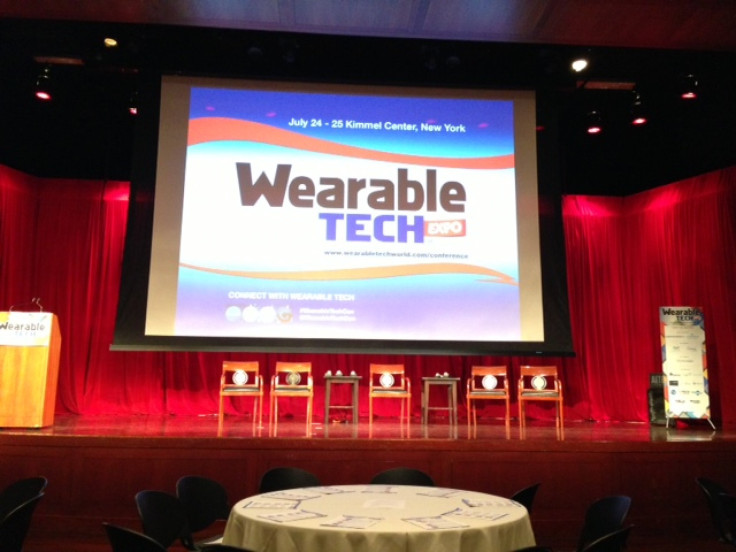Wearable Technology Conference 2013: Plantronics, MaxVirtual Take Top Prizes For Tech Innovations

Google Glass and rumors of an Apple iWatch have captured imaginations and propelled the idea of “wearable technology” into mainstream consciousness, but it’s actually an idea that has been around for a long time and grown into a thriving ecosystem. Several industry leaders came together this week in New York at the Wearable Technology Conference & Expo to discuss their views on the industry and demonstrate their latest technologies.
Each company had eight minutes to present their technology, and several stood out from the rest. The audience voted on their favorites and winners were announced Thursday morning. The winners ranged from personal fitness assistants to aids for the disabled.
The clear winner came from MaxVirtual, a company that presented Cynaps Enhance and Cynaps Connect, a hat designed to help people with conductive hearing loss. MaxVirtual was awarded with both the “Best in Show” and the “Audience Choice” awards.
The hat uses advanced speakers to enhance sound and transmit it directly to the inner ear. The speakers use bone conduction, so unlike earpieces, the ear remains free for other sounds. If a person without hearing loss tries on the hat and plugs their ears, they can still hear sounds clearly and distinguish between left and right. With Cynaps Connect, the hat connects via Bluetooth to a mobile device, and helps a person to make phone calls and listen to music.
Best Application went to Plantronics, a company that dates its wearable technology back to headsets used in the Apollo moon landing. Plantronics showed off its next- generation Bluetooth headset, which has the same form factor but is equipped with a new array of sensors, accelerometers, gyros and more. These sensors are used to gather more information about what a person is doing with the headset.
In the demo, Plantronics synced the device with Google Street view and was able to “drive” with just movements of the head. Plantronics showed how this could be used by dispatch to help guide firefighters, police and EMS workers through potentially dangerous environments by looking at clear, daytime images of dark streets or burning buildings.
Plantronics also had an avatar on an iPad that mimicked the head movements made by the person on stage wearing the device. The demo showed how it tracks how a person moves, and Plantronics said it could have vast applications for audience engagement, especially with education.
The award for “Best Advanced Technology” went to HzO, a company that uses nanotechnology to protect phones, tablets and other devices from liquids. They call the tech “WaterBlock,” and HzO had a theatrical presentation that involved dumping various fluids -- including water, mud and beer -- onto the presenter’s Smart Watch. At the end, he just dunked his whole arm into a bucket that caught all of the fluids into one. Gross, but definitely a very effective demonstration.
Finally, the “Best Device Award” from the 2013 Wearable Technology Conference went to Misfit Wearables and its Shine physical activity monitor. The small silver disk is designed to clip or pin anywhere on the user’s body, or been worn on a watch or necklace. Shine uses LEDs to help the user achieve physical fitness goals, and syncs with a smartphone simply by placing the disk on a screen.
You can read more about the 2013 Wearable Technology Conference here.
What do you think of these devices? Which ones do you see as having the most potential? Let us know in the comments.
© Copyright IBTimes 2024. All rights reserved.












